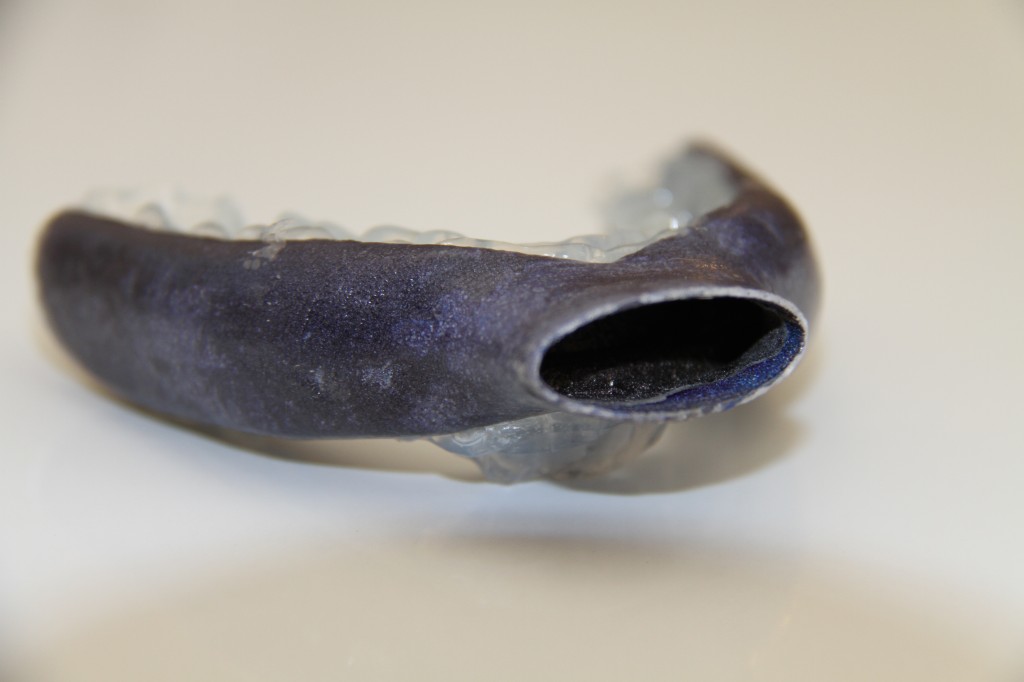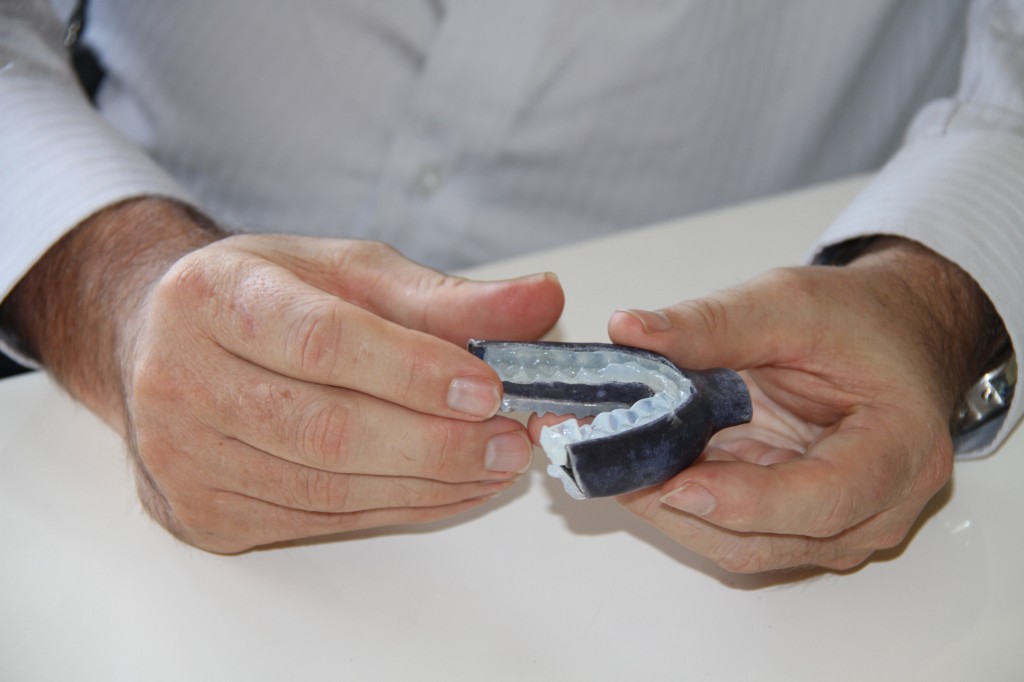There is a 5 percent chance that you suffer from apnoea, as 5 percent of the world population has this disease. When one is suffering from this disease, the person can’t breathe properly during night time. Their breathing blocks and this can happen several times per night. This is due to the fact the throat blocks the air passage. The implications can be huge, as people suffering from the disease can feel tired all the time and sometimes even get heart attacks, diabetes or a stroke. The good news? 3D printing techniques are being used to solve this problem.
More specifically, an Australian company is creating a mouthpiece to stop the throat from blocking the air passage. This company is called Oventus and they now use a 3D printer to create personalized mouthpieces for people suffering from sleep apnoea. They work together with CSIRO researchers to make it all happen. CSIRO describes the device as a “duckbill which extends from the mouth like a whistle.” The device divides the air into two separate airways, allowing the air to flow through the back of the throat while avoiding obstructions from the nose, the back of the mouth and tongue.
It is not the first mouthpiece that has ever been made for people suffering from sleep apnoea. However, what makes this an outstanding innovation is the fact that it can be personalized for each individual user. The mouthpiece can be made using a CT scan from the patient’s mouth, which can be transported to a computer. The 3D printer then turns this 3D model into an actual print, which can be used by the patient. Because of the CT scan’s possibility to accurately measure each mouth, a personalized element can be added to the device.
CSIRO’s 3D printing expert John Barnes has said the following about it: “When Oventus came to CSIRO with this idea, we were really excited. The possibilities of 3D printing are endless and the fact that we can now design and print a completely customised mouthpiece for patients is revolutionary. It’s an exciting prospect for people suffering from the debilitating disorder and the design offers significant benefits which cannot be achieved with more traditional manufacturing techniques.”
Oventus CEO Neil Anderson adds: “This new device is tailored to an individual’s mouth using a 3D scan and is used only on the top teeth which make it more compact and far more comfortable. The new 3D printed mouthpiece bypasses all obstructions by having airways that deliver air to the back of the throat and it will also stop patients from snoring.”
In case you’re suffering from apnoea yourself, then you’ll probably find it useful to know the 3D printed mouthpiece will be available from 2015. In addition, here’s a little video about this project:
Credits images: CSIRO.











